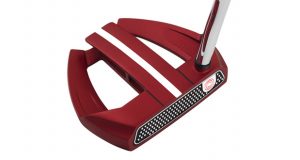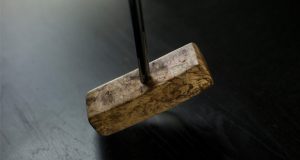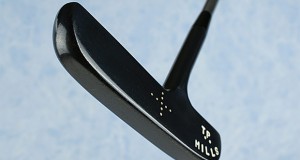Can you turn a negative into a positive? When it comes to putting, that’s exactly what Michael Breed wants you to do.
Indeed, in his new book The 3-Degree Putting Solution, Breed—a leading instructor and host of The Golf Fix on the Golf Channel—makes his case for negative dynamic loft as a crucial key to putting success.
Specifically, he advocates pressing the putter forward at address and de-lofting the putter to establish a negative dynamic loft of three degrees at impact. Why? Because according to Breed’s research, it’s the best way to impart immediate topspin, which in turn yields a number of salutary performance benefits.
In Breed’s words: “When you hit the ball with negative loft, you all but eliminate the jump in the ball that comes right after impact. It enables you to impart forward rotation and have the putt roll to the target with topspin. It allows you to control the speed and direction of the ball, and it will not check up with backspin the way it does when it is hit with positive loft.”
According to Breed, his epiphany arrived 30 years ago, after noticing that “the ball always jumped into the air immediately after impact with the putter face.” He found that by leaning the shaft forward and de-lofting his putter in the process, he was able to put a more pure roll on the ball.
Seeking affirmation, he conducted additional research, and found that several top players have espoused negative putter loft for more than 100 years, including Willie Park, Jr., Walter Hagen, Horton Smith, Bobby Locke and Dave Stockton.
(Before delving any further into Breed’s book, let’s take a moment to review the fundamentals of putter loft. As explained in PutterZone.com’s putter fitting book Putter Perfection, most putters feature a fixed loft of two to four degrees. This loft is designed to lift the ball out of its natural depression on the green. But as with any golf club, you can de-loft a putter by leaning the shaft forward at address, manipulating what is called the “dynamic loft,” or effective loft. So if you have a putter with two degrees of loft, and you lean the shaft four degrees forward, you de-loft the putter face for a dynamic loft of negative two degrees.)
While writing his book, Breed conducted scientific testing to verify his theories, and found that striking the ball with negative loft greatly enhances accuracy and distance control. The key, he writes, is to de-loft the putter face, allowing you to “make contact with the center of your putter at a point in the middle or slightly above the equator of your ball. That’ll produce that desired forward rotation. That’ll allow your ball, as Horton Smith suggests, to really hunt the hole.”
Breed’s advice squares with what PutterZone was told about Dave Stockton’s stroke by Duane Anderson at the TaylorMade Putting Lab: “Stockton’s putter has five degrees of loft, and he leans his shaft forward by seven degrees, for a dynamic loft of minus two degrees. But his vertical path is 2.7 degrees, resulting in a slightly positive launch angle that gets the ball rolling quickly with effective topspin.”
However, leading instructor Geoff Mangum, in the comments section of that same TaylorMade story, counters that “the suggestion that rolling a ball MUST use negative loft with a slight upswing is also incorrect. The real physics of rolling a ball does not require that combination, and certain combinations of a positive loft with slight upswing through impact do a great job of rolling the ball also.”
There’s no doubt that there’s more than one way to sink a putt, as is demonstrated every Sunday on the PGA Tour. But according to Breed, he has found the best way to sink a putt.
Breed’s book is a compelling read, and it delves into the larger putting experience with a variety of drills and tips for grip, setup and stroke. If you employ Breed’s method, you will be in the good company of numerous top talents in the world of putting.
As for it being the true “putting solution,” we’ll leave that debate up to the ranks of the top putting instructors.
P.S. This 3-Degree Putting Solution book review belongs to PutterZone.com’s ongoing coverage of the latest and greatest titles in golf. Check out our best golf book picks.
 PutterZone – Best Putter Reviews
PutterZone – Best Putter Reviews




